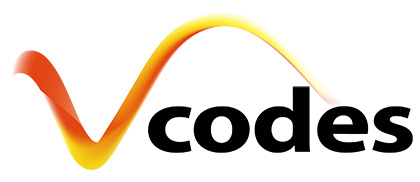The Great Value of Automated Quality Checks
Video and audio quality are crucial factors for the success of video streaming services, as they directly affect the user satisfaction and retention. However, ensuring high-quality video and audio delivery is not an easy task, as it involves many challenges such as encoding errors, network fluctuations, device compatibility, format compliance and user expectations.
Manual quality checks are time-consuming, costly and prone to human errors, and they cannot cover all the possible scenarios and variations that may occur in real-world situations. Therefore, video streaming services need software solutions that can automate the video and audio quality checks and provide reliable and consistent results.
What are Automated Video and Audio Quality Checks?
Automated quality check (QC) solutions, like the Vcodes vCoder QC, are software processes that analyze the video and audio streams of a given content and detect any errors or issues that may affect the quality of the playback. These checks can be performed at different stages of the content life-cycle, such as encoding, transcoding, packaging, delivery and consumption. Automated video and audio quality checks can perform various types of tests, such as:
- Format compliance: verifying that the content conforms to the required standards and specifications, such as codecs, containers, bitrates, resolutions, frame rates, aspect ratios, color spaces, etc.
- Content integrity: verifying that the content is complete and consistent, without any missing or corrupted frames, segments or chunks.
- Content quality: verifying that the content has a high perceptual quality, without any artifacts, distortions or impairments, such as blocking, blurring, banding, noise, flickering, etc.
- Audio loudness: verifying that the audio has a consistent loudness level across different segments and platforms, according to the required standards and regulations.
- Audio synchronization: verifying that the audio is synchronized with the video throughout the playback.
To automatically measure the content quality different algorithms were developed over the years like PSNR, SSIM and VMAF. The more modern ones also apply AI deep learning models to analyze and classify the quality of the video streams based on trained data sets or examples.
How Can Automated Video and Audio Quality Checks Benefit Video Streaming Services?
Automated video and audio quality checks can benefit video streaming services in several ways:
- They can improve the user experience and satisfaction by ensuring a high-quality video and audio playback across different devices and platforms.
- They can reduce the operational cost and complexity by saving time and resources for manual quality checks and corrections.
- They can enhance the content security and compliance by detecting any unauthorized modifications or violations of the content standards and regulations.
- They can provide valuable insights and feedback by generating comprehensive reports and statistics on the content performance and quality.
Conclusion
In the modern age, the quantity of video content is constantly increasing and it becomes impossible to keep up with manually quality checks. Manual quality checks are time-consuming, costly and prone to human errors, and they cannot cover all the possible scenarios and variations that may occur in real-world situations. Therefore, video streaming services need automated video and audio quality checks that improve the user experience and reduce operational cost and complexity.


